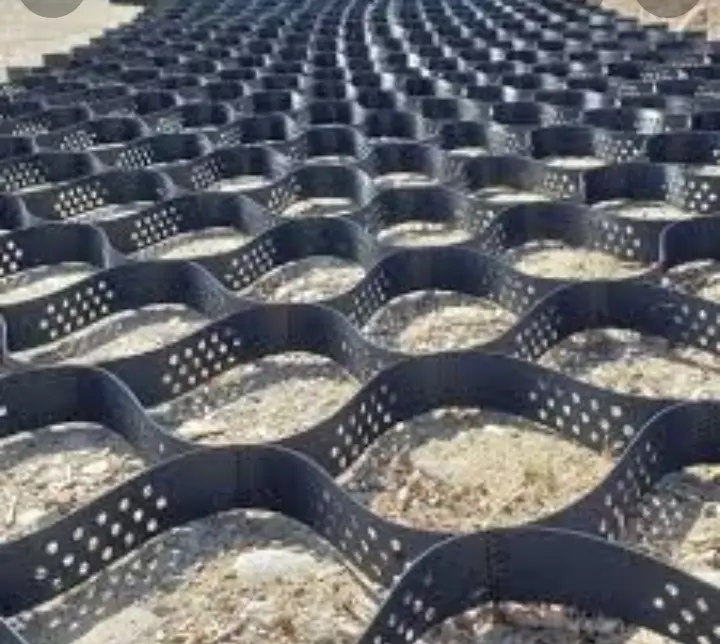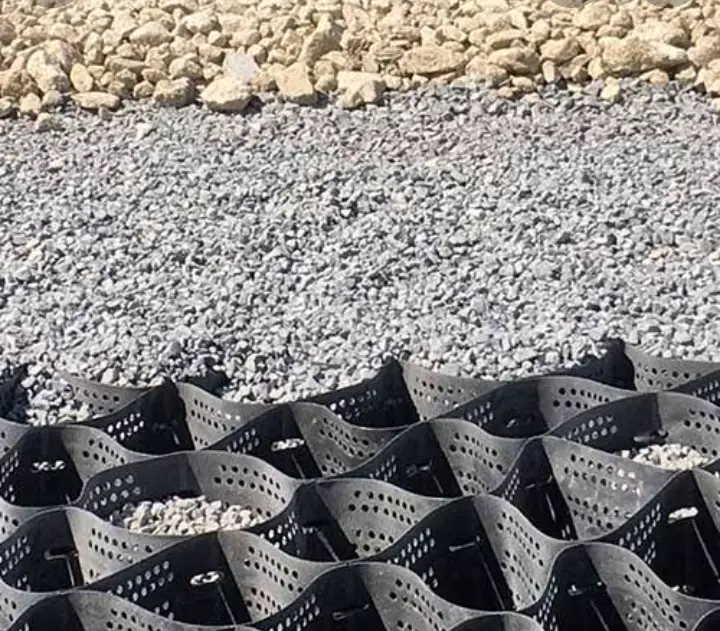Ground stabilization grid installation is a process in which a grid of wires, cables, or rods are installed on the surface of the ground to achieve stabilization. The purpose of ground stabilization grid installation is to resist the movement of the earth’s surface.
What is a ground stabilization grid?
Ground stabilization grid (GSG) is a type of geo-technical device used to stabilize soils, preventing soil liquefaction and landslides. GSSG is also used to improve soil fertility, and water infiltration, and to promote plant growth.
A GSSG consists of an array of interconnected steel or plastic pipes or stakes that are driven into the ground at regular intervals. The pipes are filled with an impermeable material such as sand, gravel, or clay, which is then covered with a layer of soil. When disturbed, the weight of the overlying soil pushes down on the pipe network, stabilizing the ground beneath it.
How ground stabilization grid Works
Ground stabilization grid installation is the process of installing an unyielding, flat surface on the earth to help maintain ground stability. When a slope becomes too steep or unstable, the grid helps to keep the earth in place by creating an even surface. Grid installations are often used in areas prone to landslides or other ground instability, such as earthquake zones.
The grid is typically made up of steel plates that are welded together and then covered in a rubber or plastic coating. The plates are then placed at intervals so that they form a grid pattern. The purpose of the grid is to create an unyielding surface that can resist deformation from forces exerted on it. When installed correctly, the grid can help to prevent landslides and other ground instability from occurring.

The applications of ground stabilization grid
Ground stabilization grid installations are becoming increasingly popular for a variety of reasons. One reason is that the grid can help stabilize unstable soil and prevent landslides. The grid also helps improve water infiltration and drainage, which can help reduce water pollution and improve soil health.
Other applications for ground stabilization grids include protecting against wind and water damage, preventing erosion, and reducing noise and vibration levels.
There are a variety of grid types available, and they can be used in a variety of different ways. Some grids are designed to be fixed in place, while others can be moved as needed.
Some factors to consider when selecting a ground stabilization grid include the type of soil being stabilized, the size and shape of the area being stabilized, and the costs involved.
Overall, ground stabilization grids are an effective way to improve the stability of soil and prevent damage from a variety of sources.
The benefits of ground stabilization grid
Ground stabilization grid installation is a solution for unstable soil and helps in retaining moisture and preventing erosion.
Ground stabilization grid installation is a solution for unstable soil and helps in retaining moisture and preventing erosion. The grid is installed on the surface of the earth, either as a permanent fixture or as a temporary measure to stabilize unstable soils. The benefits of ground stabilization grid installation include:
- Reduction in soil erosion: When soil is unstable, it can easily be eroded by wind or water. The ground stabilization grid installation prevents this from happening by stabilizing the soil against erosion.
- Improved water retention: The ground stabilization grid installation also helps to retain more water in the soil, which helps to prevent powerful weather conditions from causing extensive damage.
- Reduced maintenance requirements: The grid can last for years without requiring any special care, which makes it a cost-effective solution for many applications.
- Improved plant growth: The grid also helps to improve plant growth by providing a stable surface on which plants can grow. This helps to increase the efficiency of the plants and reduces the need for irrigation or fertilization.
- Reduced noise: The grid also reduces noise by stabilizing the ground. This helps to reduce the risk of structural damage or earthquakes.
- Improved safety: The ground stabilization grid installation also helps to improve safety by preventing falls or other accidents.
- Reduced environmental impact: The ground stabilization grid installation also has a minimal environmental impact, as it does not require the use of any heavy machinery or materials.
- Reduced maintenance costs: The ground stabilization grid installation is also a cost-effective solution, as it does not require any special maintenance or repairs.
- Reduced construction time: The grid can be installed in a short period of time, which makes it an ideal solution for many applications.
- Improved aesthetics: The grid also has an aesthetic appeal, as it helps to improve the appearance of the landscape.
The costs of using a ground stabilization grid
When installing a ground stabilization grid, there are several factors to consider. The grid can be expensive, depending on the type of grid used and the size of the area needed. Here are some cost factors to consider:
- Grid Size: The size of the grid will determine how much it costs to purchase and install. A small grid may only cost a few hundred dollars, while a large grid may cost thousands of dollars.
- Type of Grid: There are two main types of grids used for ground stabilization: tension and compression. Tension grids hold up the soil by creating an opposing force between the ground and the wire mesh. Compression grids use weight to push down on the soil, similar to how a tampon works.
- Location of Grid: The location of the grid will also affect its cost. If the grid is needed near a water body, for example, the cost of installation might be higher due to additional permitting requirements.
- Time Frame: The time frame for installing a grid will also affect its cost. If the grid needs to be installed quickly, the cost may be higher.
- Grid Maintenance: Grid maintenance costs will depend on the type of grid used, the frequency of use, and the size and location of the grid.
When considering the costs of using a ground stabilization grid, it is important to consider all of the factors involved.
The installation of the ground stabilization grid
Grid installations can help stabilize the soil and prevent landslides. By installing a grid, you can control the movement of the dirt and debris on the ground, preventing them from creating dangerous slopes or cliffs.
Grid installation is typically done in areas that are at high risk for landslides. Grid installation can help stabilize the soil, preventing it from sliding down the hillsides.
Grid installation is a slow and labor-intensive process. Grid installation teams typically use heavy equipment to install the grids, making it difficult for them to move around in the area.
Grid installation can take a few days or weeks to complete. Grid installation teams typically work around the clock to complete the installation as quickly as possible.

Advantages of ground stabilization grid
Ground stabilization grid installation is an effective way to stabilize the soil and prevent landslides. The grid helps to hold the soil in place, preventing it from sliding down hillsides. The grid can also help to keep water out of the soil, preventing erosion. Ground stabilization grids can be installed on slopes up to 30 degrees.
Disadvantages of ground stabilization grid
Ground stabilization grid installations have been in use for many years now, but there are some disadvantages to using them. The main disadvantage is that the grid can be very expensive to install and maintain. Additionally, the grid can create a lot of noise and vibration when it is in use, which can be disruptive to residents and businesses.
Conclusion
If you are in the market for a ground stabilization grid installation, then you should definitely consider contacting our team at Ground Stabilization Grid. Our grids are designed to help with various stabilization and restoration projects, such as building foundation repairs or installing new drainage systems. Contact us today to learn more about what we can do for you!
FAQS on ground stabilization grid
What is a ground stabilization grid?
A ground stabilization grid (GSG) is a temporary installation used to stabilize disturbed soil and help prevent erosion. GGG’s are typically made of plastic or metal poles, interconnected by wire mesh or netting, and are attached to the ground with straps or chains. GGG’s help to slow down the movement of soil and water, preventing landslides and sedimentation.
How do I install a ground stabilization grid?
There is no one definitive method for installing a GGG, as different sites require different methods depending on the terrain and conditions present. common steps for installing a GGG include: selecting a site for installation; establishing a baseline survey of the area; locating the grid points; installing the poles; connecting the poles; securing the grid with straps or chains; and grading and tamping the soil around the grid.
Is a ground stabilization grid necessary in all cases?
No, GGGs are not always necessary. However, they can be an effective tool in mitigating potential erosion problems on slopes and hilltops, especially if other preventative measures, such as planting vegetation along slopes, are not feasible or effective.

